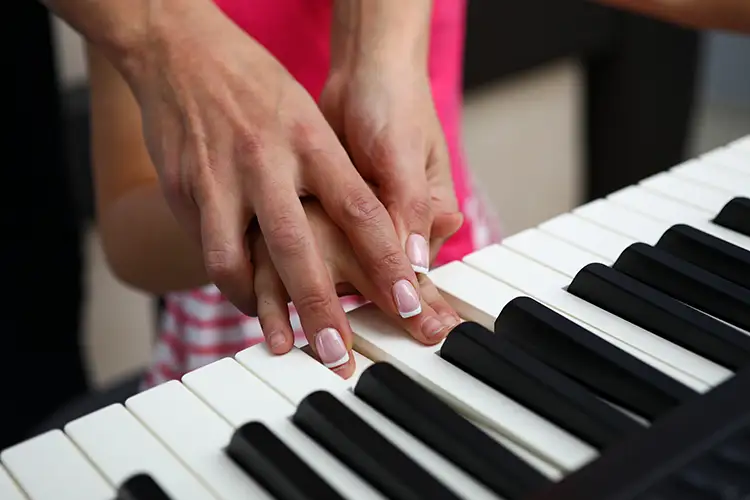Innovative Strategies for Homeschool Families
by Mark Almond

Our DVD / video program presents new material that will allow homeschool families to experience unprecedented success in music education. Thirty years of research has led to the conviction that there have always been piano teachers who could do much more than just teach the commonly accepted materials of music. These teachers, often called composition teachers in the past, could also explain the core principles of the nature of harmony. Understanding harmony is equal to understanding music itself, and produces almost unbelievable results.
At Piano for Life Incorporated, presenting this neglected aspect of music education, in the most practical way possible, is our first priority. We understand precisely why many educators falsely assume that an understanding of harmony is difficult to teach. It is, however, a verifiable fact that anyone can understand these principles when they are clearly presented. In addition, and even more controversial, is the fact that parents can successfully teach harmony to their own children. One of the greatest concert pianists in history, Alfred Reisenauer, tells the story of how his mother explained the wonderful natural relationships of tones used in making music. He said she did this before he was taught anything else, and credits her for his great success. How did she teach this material to a young child in a way that made sense? Our video presentation on the essential building blocks of harmony answers this question within a few minutes.

Because most piano teachers do not teach a practical understanding of harmony, parents without previous music training, by contrast, can achieve fantastic results that will allow their children to excel in all areas of music study. The perceived conflict between the more traditional skill of reading notes, versus the various skills that naturally result from understanding harmony, shouldn’t even be an issue. History teaches that each student must be able to read music and understand harmony. Our approach lays the foundation for both.
Piano teachers who do communicate a practical understanding of harmony need not fear the possibility that “untrained parents” will achieve superior overall results educating their own children. At the present time, this means about 10% of the piano teachers have nothing to worry about. The other 90% will continue to lose the vast majority of their students to discouragement caused by an incomplete left brain approach. Since the beginning of the 20th century, when most piano teachers for all practical purposes stopped teaching harmony, the number of people who have quit before really learning how to play has been an incomprehensible disaster affecting untold millions. On top of this, consider the high percentage of pianists that play “mechanically” for no reason other than that is the way they were taught.
Our analysis of harmony is not someone’s new chord theory or strange new system, but simply a clear breakdown and explanation that includes the traditional terminology only after the most important concepts are understood and experienced. This is the only program ever created that shows the practical applications of these insights every step of the way. History provides many examples of “unusually talented” individuals who apparently always had a special person as an influence in their life. Invariably, a parent, teacher, or friend behind the scenes, provided an understanding of the basic structures of harmony to the “mysteriously gifted pianist.”